Texans are suffering with cold weather, power failure, and water supply failure. (In other words, they’re learning what it is like to live in the Northeast; see, for example, the 2011 storm that took out power for 3.2 million people, many of whom went a week without power. In the Boston suburbs it is typical to lose power 4-6 times per year, e.g., due to a fallen tree or a storm, and for durations of up to 48 hours. Also 2013 and 1978 events, in the latter of which more than 100 people died.)
(That we’re calling this the “Texas power outage” might be an artifact of how our media presents things. “Widespread Power Outages Continue in Texas” is the caption the New York Times editors have placed over a map showing that the worst outages are in Louisiana and Mississippi:
)
The media can find an unlimited number of folks who describe this as a trivially foreseeable event, e.g., “Why Texas’ energy grid is unable to handle the winter storms” (NBC):
The crisis has made the state’s energy grid the focus of fresh scrutiny, primarily due to its independence from the rest of the U.S. Critics say that allowed its infrastructure to shirk federal regulations that require cold-weather capabilities.
Heroic regulators could have prevented this from happening? The governor agrees! “‘Massive failure’: Why are millions of people in Texas still without power?” (USA Today):
At the most basic level, the outages have been caused because demand amid the bitter cold has outpaced the supply of energy used to heat and power homes, said Daniel Cohan, an associate professor of civil and environmental engineering at Rice University.
Gov. Greg Abbott called the situation “unacceptable” and said he would add an emergency item to the state’s legislative session on reforming ERCOT. The nonprofit corporation is subject to oversight from the Public Utility Commission of Texas and the Legislature.
There were similar events in 1989 and 2011… “Five things to know about Texas’s strained electric grid” (The Hill):
The 1989 blackouts came amid a cold snap in December, while the 2011 blackouts took place during the first week of February when wind and unseasonably cold temperatures hit Texas and neighboring New Mexico.
In total, approximately 1.3 million electric customers were out of service at the peak of the 2011 event on Feb. 2, and a total of 4.4 million were affected from Feb. 2 to Feb. 4.
In a report following the 2011 blackouts, FERC and the North American Electric Reliability Corporation recommended steps including increasing winterization measures.
The report said electricity generating companies operating within the ERCOT system “failed to adequately prepare for winter,” citing inadequate insulation and a failure to train operators and maintenance personnel on winter preparations.
If this was easy to foresee (and maybe it should have been, given what happened in 1989 and 2011), why weren’t these newspapers and interview subjects out there at least since 2011 beating the drum for more power plants and more winterization of infrastructure?
Could there be a general principle in operation here? After a hurricane hits, it is obvious that we should have put vastly more resources into being prepared for the hurricane. After a bad respiratory virus pandemic, it is obvious that we should have put vastly more resources into stockpiling PPE and ventilators (see Paper titled “Stockpiling Ventilators for Influenza Pandemics” (2017)).
Here in the Northeast we know that we could eliminate nearly all of our outages via putting power lines underground, but nobody wants to pay for it. This utility explains:
The main reason why undergrounding hasn’t been fully adopted in the U.S. is the overwhelmingly high cost of installing underground power lines. Estimates place the cost of undergrounding power lines at roughly $750 per foot, compared with $70 per foot to install power lines the way we do today. At over ten times the cost, this would become expensive very quickly.
Take North Carolina, for example. In 2002, the state looked into undergrounding for their three major power companies after a particularly bad power outage that left 2 million people losing power. After it was priced out, North Carolina found that their project would cost $41 billion (six times the net value of those three companies’ distribution assets) and would require 25 years to complete!
People are regularly killed during power outages. Should we pay any price, bear any burden to save lives via underground power lines? Apparently not. (Even though $41 billion rounds to zero in coronanomics!)
Why can’t people see that (1) we don’t have infinite money and time and therefore can’t be prepared for everything bad that might happen, and (2) they’re using hindsight when they talk about how we should have put more resources into preparing against something bad that actually did happen?
As of yesterday, 4 percent of total customers (poweroutage.us), but I am pretty sure that this figure will never appear in a headline (since Texas has such a huge population the outage will appear as the total number of customers who are out).
I asked a California Democrat (and tenured physics professor), who was expressing outrage that the Texas grid wasn’t subject to federal regulation, what he thought the number would be, if not 4 percent, if Texas had been federally regulated. He answered “0 percent”. Let’s have a look at Mississippi, which has federal regulation and has suffered from a similar cold snap. 13.5 percent of customers in MS are out as of the same time as the above map:
How about Louisiana?
Across the three states, it looks as though the outages line up with the USDA Zone 8b (Austin, Texas being included in this zone).
In other words, a cold snap in Zone 8b results in power failures whether the grid is regulated by the feds or the state. (The failures were slightly different in character, with Texas knocked out by high demand while MS and LA suffered from both excess demand and power lines downed by the ice and snow. Both could have been avoided, however, with additional $$ invested in preparation.)
Update, Feb 20, 11:00 am: 6 percent of folks in Mississippi are still without power, mostly in Zone 8b and some in Zone 8a.
(Texas, where the outages started earlier, is 99.4% powered (0.6% without power).)
Related:
- Austin and Lockhart, Texas: 10 barbecue restaurants in 72 hours (fortunately, the smokers will continue to operate without power)
- “The Texas Freeze: Why the Power Grid Failed” (WSJ) sounds like a great analysis. Companies that generate power aren’t paid to sit on standby, so there is an undersupply of standby power, especially during cold snaps when it would be expensive to prep a plant to keep operating. A big nuclear plant tripped off due to a water supply freeze. The authors attribute the problems to the way Texas set up its market for electric power, e.g., paying only for power delivered and not for being ready. But they never look at why the grid failures were nearly as bad in Louisiana and Mississippi. Maybe this is like coronascience and it is only necessary to tell a good story after data are received?
- February 2013 North American blizzard (Wikipedia), in which 18 people died, the power failed, and it was both illegal and impractical to travel by road here in Maskachusetts.
- Northeastern United States blizzard of 1978 (Wikipedia) in which 100 people died.
Very loosely related…
From a 2018 business trip to Dallas, extended due to 50-knot winds in the Northeast and the cancellation of airline flights back home, the George W. Bush Presidential Library (closed for a year now due to coronapanic):
And from the art museum, an unfortunately timely painting, Frederic Edwin Church’s The Icebergs:

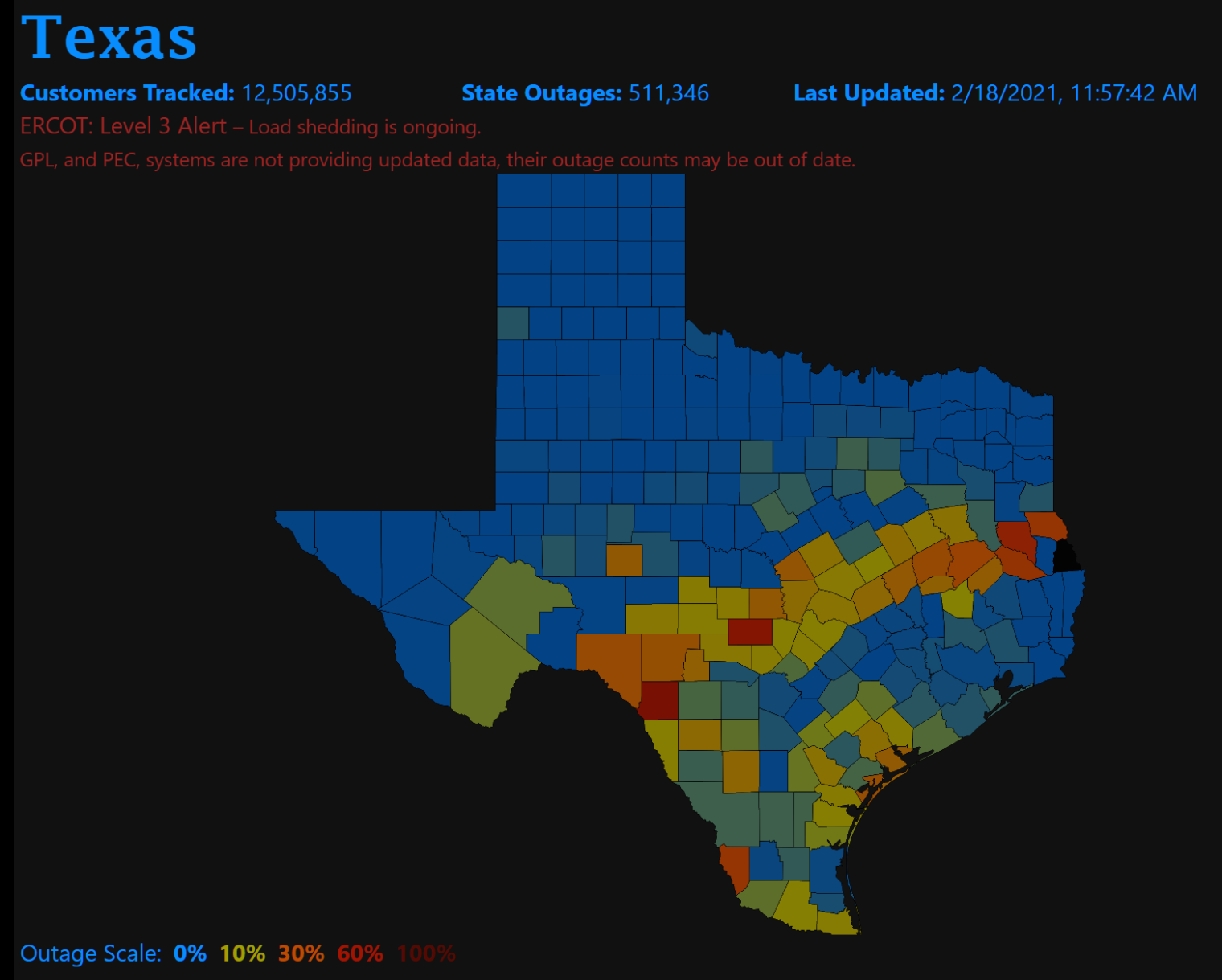
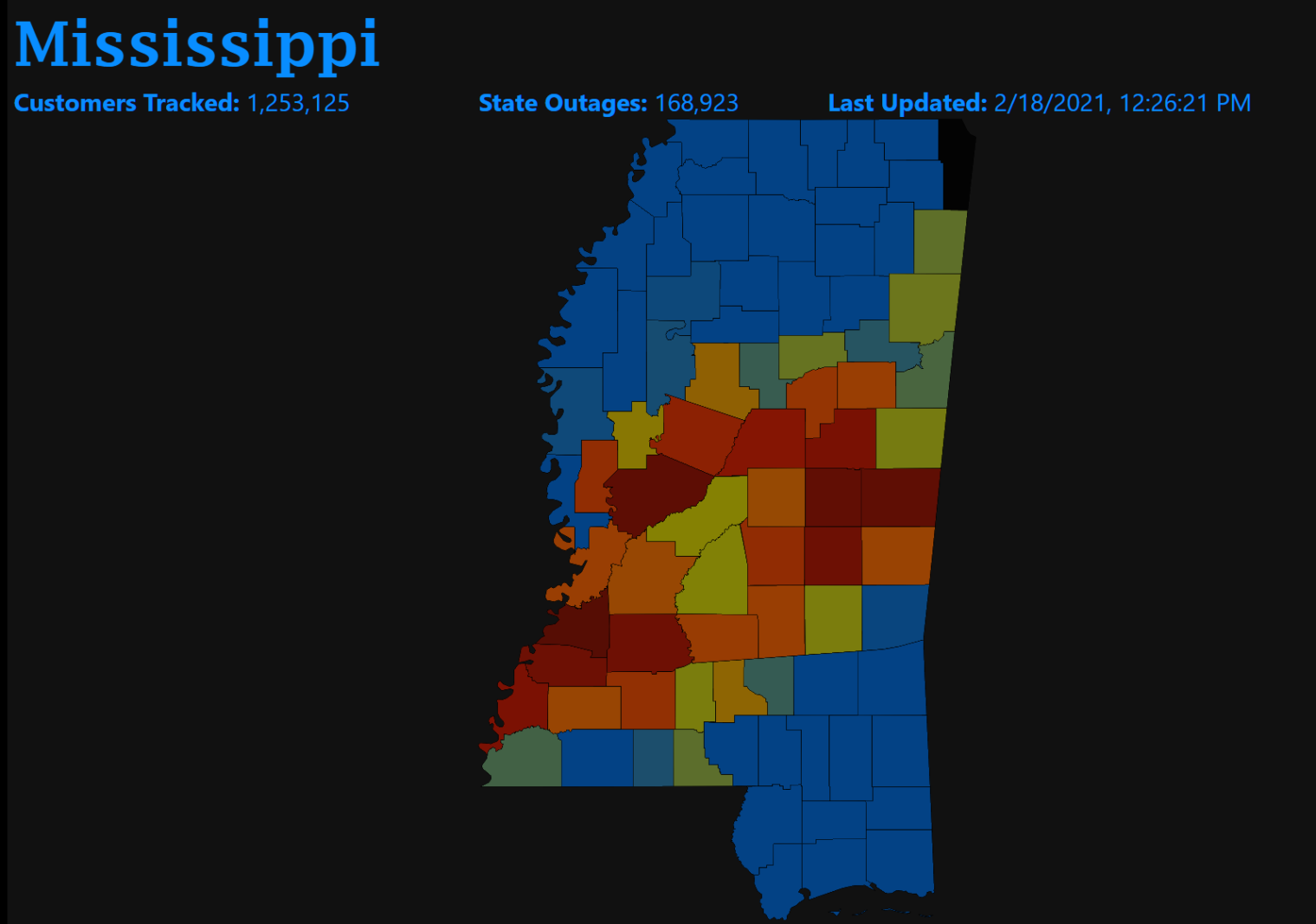
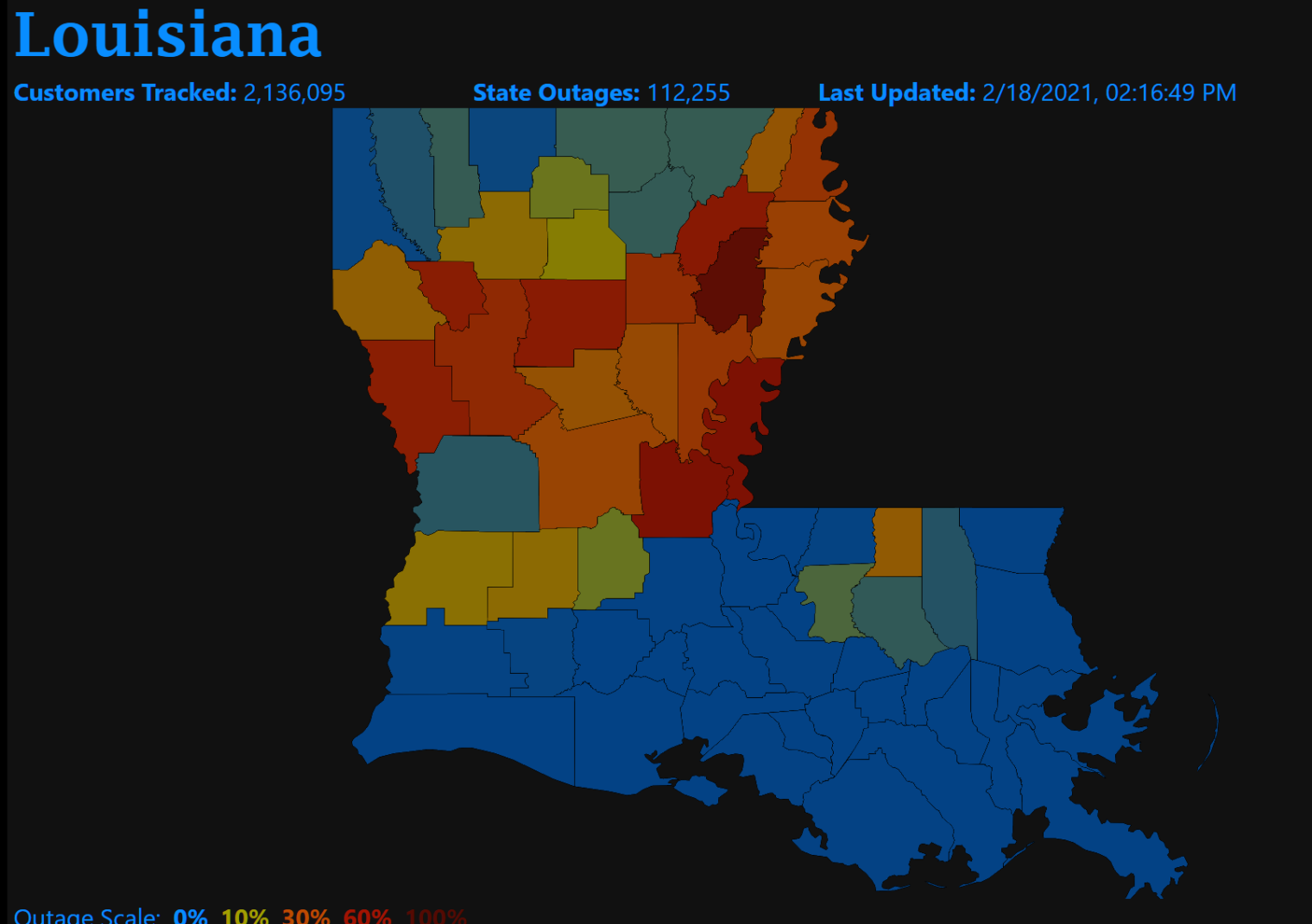

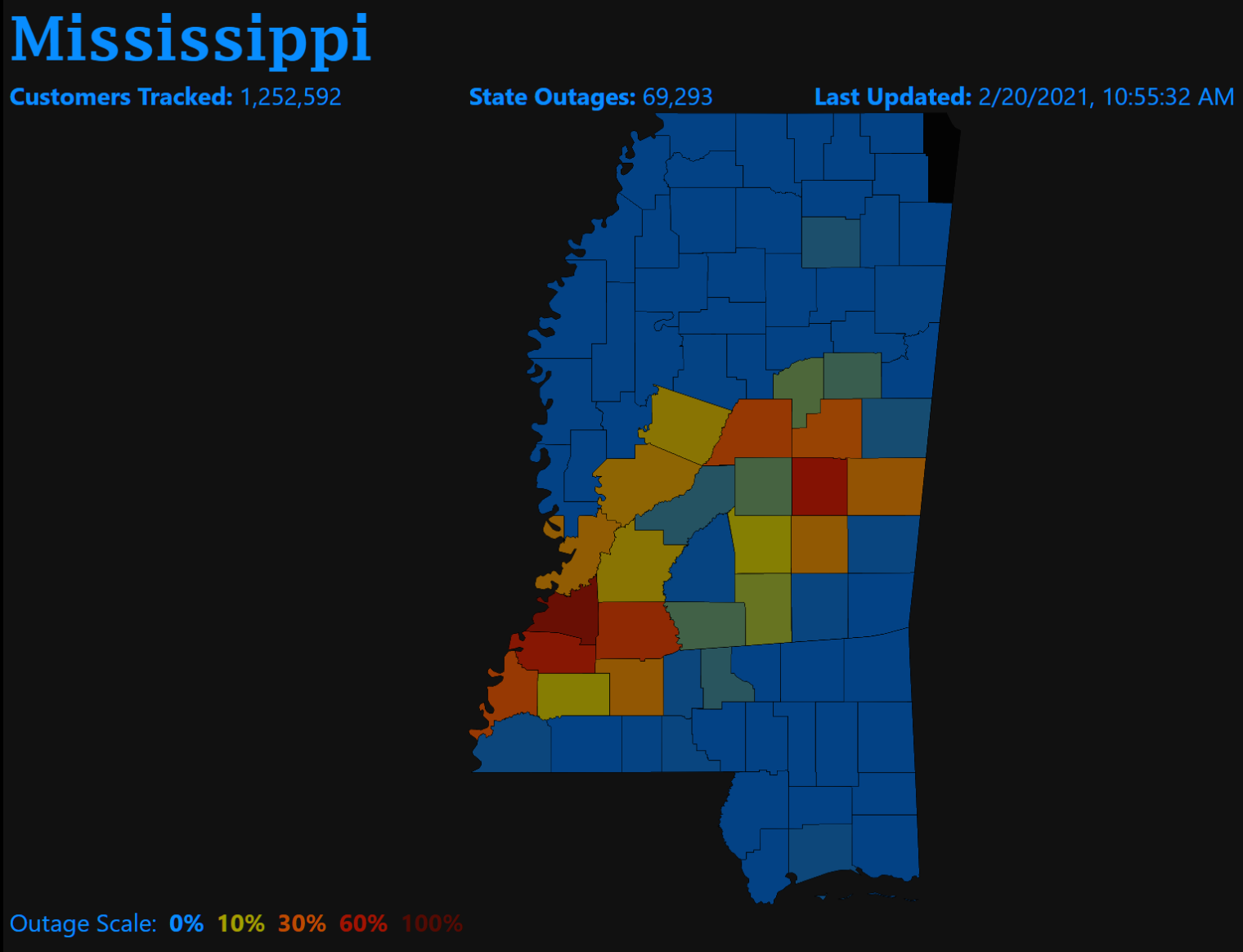
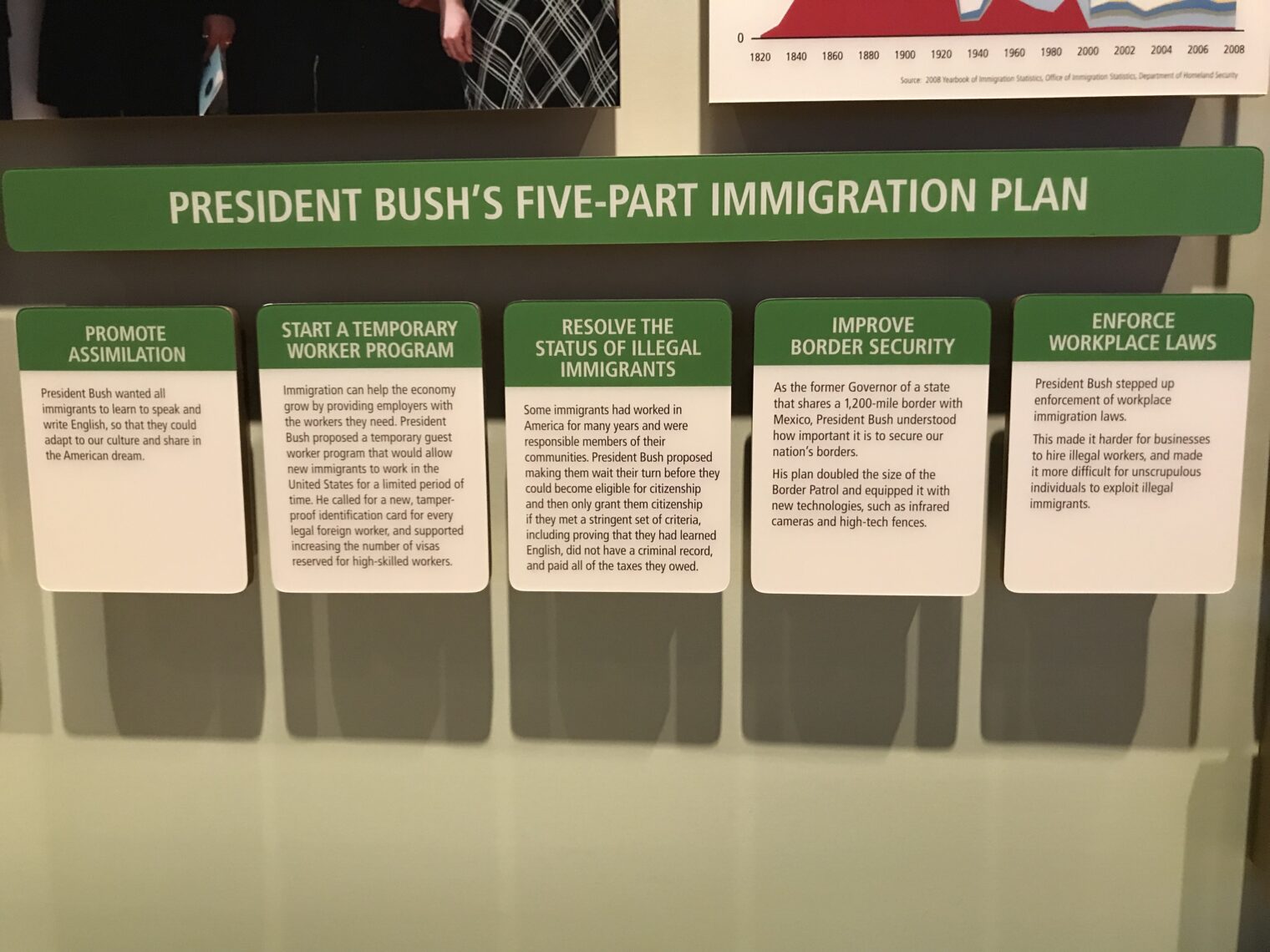

I don’t know maybe the US got the tradeoff exactly right, but it seems a little Panglossian to accept it without checking, given that there are multiple levels of decision makers, cross externalities etc? It’s possible that the US truly has the best of all possible risk management strategies, but is it likely? It seems plausible that from a politician’s standpoint, it’s better to save money on events that happen once in 20 years, and by the time they strike they are retired, or have moved on to higher office.
Generally speaking it seems to me that the US underinvests in disaster preparedness. Every year a major metro or three are shut down for weeks by hurricanes. I get not wanting to retrofit the entire capital stock, but it would seem sensible to mandate some kind of mitigation at least when rebuilding. Raising an existing house 6 feet seems to cost $15k or so. Probably cheaper on a new construction?
Or take the powerline thing. Sure it would take forever and be super expensive to retrofit the entire state, but is the entire grid equally at risk of downed power lines? If it’s like most things, 10% of the lines (in heavily forested areas or whatever) will be responsible for 90% of the power outages, or some such figure. You could bury the worst 10% (most prone to failure, serving the most people, hardest to repair, or some meaningful combination), and then the existing crews could focus on quickly repairing the remaining failures after each weather event.
I think the lesson is that people don’t bother preparing for serious events that happen at low frequency, even if it’s inevitable that they will eventually happen. In principle it might be that the cost of preparing exceeds the expected resulting benefit from said preparation, but really what seems to happen in practice is that people never make that calculation and instead bury their heads in the sand. My favorite example is earthquakes in California. 80% of San Francisco burnt down after the 1906 quake, although part of that was because people were burning their homes down for the insurance money (like today, most California homeowners had fire insurance but not earthquake insurance). Fascinatingly, San Francisco seems to have entirely forgotten the lesson that people respond to incentives (e.g. if you burglarize a home, you are given a gift card: https://www.reddit.com/r/sanfrancisco/comments/kmpc06/court_releases_serial_burglar_to_visit_family/).
a comptehensive chart of us energy prices by state:
https://www.eia.gov/electricity/monthly/epm_table_grapher.php?t=epmt_5_6_a
Texas electricity costs are two-thirds of cold-weather conditioned New York. I would agree to a decennial three-day power outage to get that discount.
I miss the old days when the weather was not a political topic.
Texas has more expensive power than all/most of its neighbors though.
Andrea: Are you looking at the “All Sectors” column? The Texas rates seem pretty similar to nearby states (which, I guess, means there isn’t a huge advantage to being free from the Federales). Texas has had a lot of population growth, which means that keeping rates constant in the face of rising demand is an achievement. Americans generally couldn’t afford to build the infrastructure that we enjoy at current construction rates. In other words, I would expect new sources of electricity to cost more than old sources. Nuclear power is a good example of this. There is no way right now to build a new nuclear plant that can generate power at competitive rates, but it is sometimes possible to operate existing plants without going bankrupt.
(Regardless, we here in Maskachusetts would be delighted to pay Texas rates!)
A factoid in Andrea’s argument’s favour — consumers who opted for market-based unregulated prices got hit with massive bills:
>Homeowners hit with electric bills as high as $17K amid Texas winter storm
https://nypost.com/2021/02/19/homeowners-hit-with-massive-electric-bills-amid-texas-winter-storm/
Phil- excellent title.
Ryan – excellent summary
…..add to the mix:
At the aggregate level Texas is still decidedly Republican, so there is a lot of political expediency in exploiting a rare event
People have little sense of history like Phil alluded to when the Northeast failure of August 2003 left 50 million without power – and no Texas governor nor ERCOT in sight
Excellent article Phil and I had no idea what was happening in LA and MS, all I have been hearing about is TX.
I was in Iceland many years ago, driving the road around the island. Parts of the southeast sections were interesting, the roads/bridges all looked new. They had all been rebuilt due to another volcanic explosion and the flowing debris, with rivers and channels all changing and the past infrastructure destroyed.
What was fascinating was upon investigation I found out when this happens, the roads and bridges are built but not overbuilt. They are ‘good enough’ until the next event happens, wipes everything out, and they quickly rebuild. An interesting and practical approach.
The most important lessons to learn from the Texas power outages are:
1) Pipes freeze even in Texas especially when the power goes out.
2) Zone 8B can’t handle cold temperatures very well no matter where in it you live or who regulates the power there.
3) You can use your Ford F150 Hybrid truck to run a heater, and your fridge. https://www.motortrend.com/news/2021-ford-f-150-powerboost-hybrid-powering-texas-homes-winter-weather/
4) But by far the biggest takeaway from the “Texas Power Outages” is that Andrew Cuomo has been forgiven for his role in the nursing home deaths in New York State. He gave a press conference right in the middle of the Texas outages, he sang his song, and everyone has forgotten about it.
Also: Apparently Democrats care deeply about Texas when they are running an election campaign and trying to flip the state (D), but once the election is over, it’s a bunch of racist rednecks freezing to death like they deserve for ignoring global warming. Ted Cruz is now the cause of all of Texas’ misery even though as Senator there’s pretty much nothing he could do. Oh, and if someone at United Airlines doesn’t like your politics, they’ll release doxx out your private flight information.
A wealthy Senator has no resources or influence to bring to the table? Give me a break…
Phil, I nominate this for your interesting idea every three months post. I kept saying to myself I didn’t know that. Excellent comments too.
Have fun reading the process that was needed prior to the power outage. Compare the minimum price of $1500/MWh to your current power bill. Government and people were aware of the potential harm ahead of time.
https://www.energy.gov/sites/prod/files/2021/02/f82/DOE%20202%28c%29%20Emergency%20Order%20-%20ERCOT%2002.14.2021.pdf
A nice detail filled article that also addresses the outages in LA, MS and other areas during the extreme weather.
https://www.iea.org/commentaries/severe-power-cuts-in-texas-highlight-energy-security-risks-related-to-extreme-weather-events
I live in a very rural area in the Northeast and have no choice about being prepared. Go solar and drill a well to reduce dependency on the system. When the power goes out I fire up my generator.